The downhill horse
We are no longer building saddle trees, but we have two videos about how Western saddles fit horses available on our westernsaddlefit.com website.
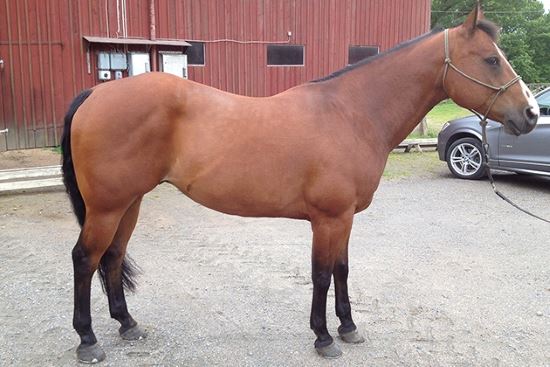
I’ve had a couple discussions in the past week about how to deal with downhill horses. (Yes, despite life changing, we still talk a lot about saddles, trees and horses.) Lost in the archives, in the middle of the section on evaluating a horse for fit, I talked about how we decide if a horse is downhill or not.
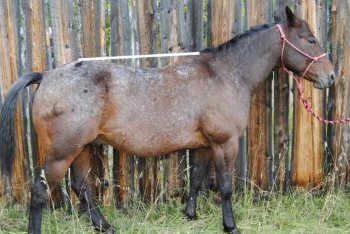 |
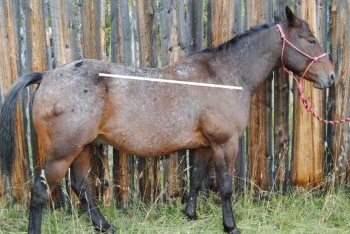 |
For a tree maker, it doesn’t matter if the hip is higher than the wither or not, since we don’t fit either of those. Nor does the slope of the spine inside the horse make a difference to us since we avoid the spine at all costs.
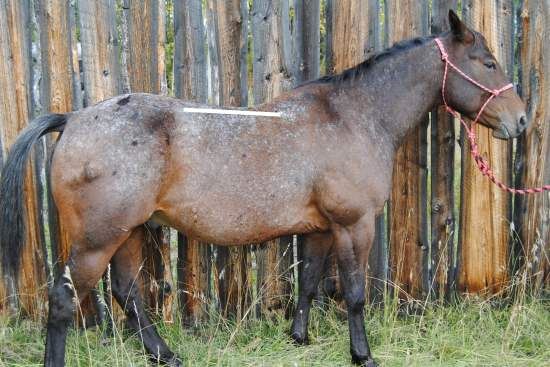
What we look at is where the bars go on the back and what angle that is.
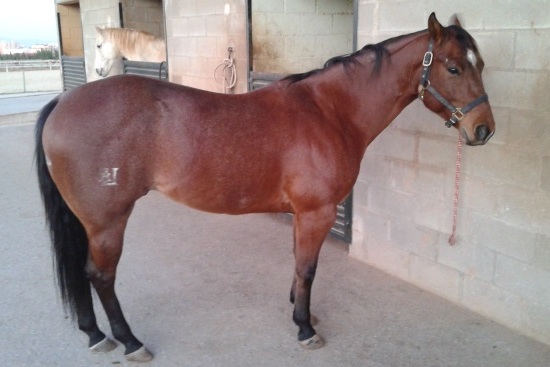
We want the bars to have as much contact with the horse as possible, which means that they will follow the angle of the horse underneath them.
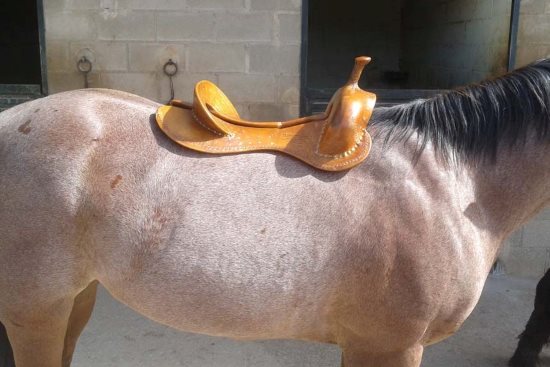
If the horse slopes towards the front, the bars will slope towards the front, so the whole saddle will tilt down at the front. (This is the same horse as the one above it, just in the sun.)
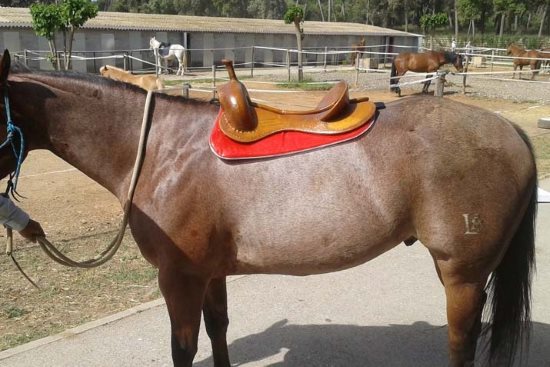 (Remember that padding will lift the front a bit more than the back, so a bare tree slopes more downhill than the same tree in a saddle will and even more than the same tree in a saddle with padding will. You can see the difference in how horizontal the tree is in this picture with the thick pad underneath it compared to the picture above with no padding.)
(Remember that padding will lift the front a bit more than the back, so a bare tree slopes more downhill than the same tree in a saddle will and even more than the same tree in a saddle with padding will. You can see the difference in how horizontal the tree is in this picture with the thick pad underneath it compared to the picture above with no padding.)
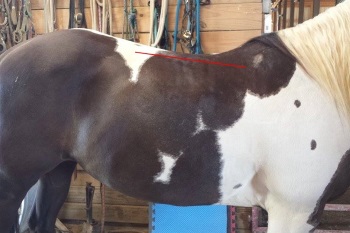 |
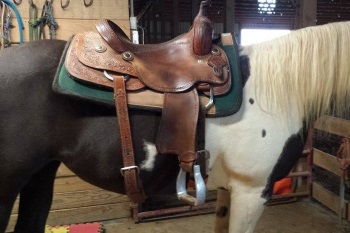 |
But, gravity always works, so the concern is that the saddle will slide forward onto the horse’s shoulder blades or jab into the horse’s shoulder blades, depending on the conformation of the horse and the shape of the front bar tips. (You can see by the mark at the back of the shoulder blade on this horse that it has been a problem for her.)
How much this may or may not happen depends on how well the shapes of the saddle and horse match. The more they match, the more surface area is in contact, the more friction there is to hold the saddle in place and the less likely it is to move out of place. So an ill fitting saddle on a downhill horse will cause a lot more problems than a good fitting saddle on a downhill horse. But the saddle still slopes downhill.
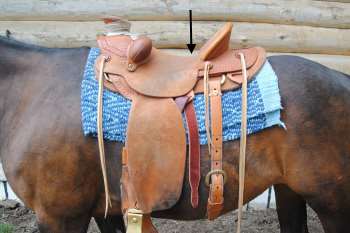 |
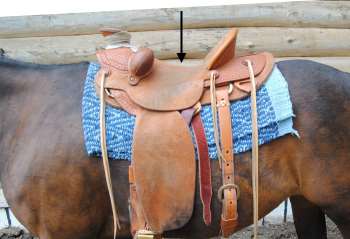 |
The result for the rider is that the low point in the seat, where the rider’s seat bones always end up (because gravity always works) moves forward. This affects how and where the rider sits in the saddle. They often feel like they are being forced to lean forward and their legs are behind them. So their weight is thrown more forward, making the likelihood of problems with the shoulders even worse. And they fight the saddle, trying to stay upright, and don’t enjoy their ride.
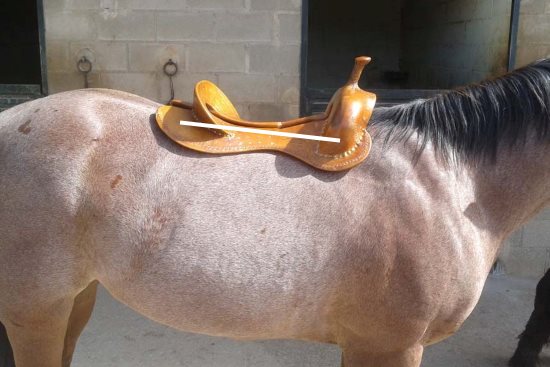
Which comes to the big question - how do you deal with fitting a downhill horse? There are a few different techniques that have been proposed. (The white line represents the "line" of the bar.)
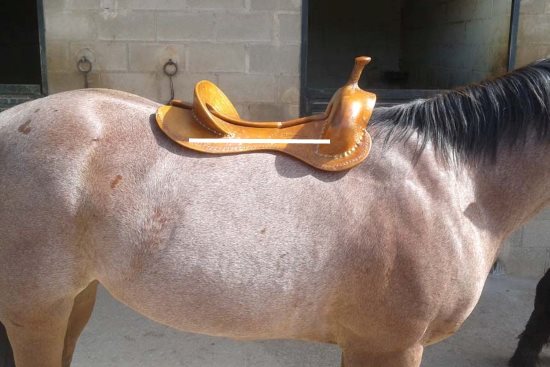
One is to widen out the back of the tree so the back of the bars sit lower. This sounds good, but in real life, you can’t widen them out far enough to make much difference on most horses. Why? Well, the majority of downhill horses that we have seen have been quarter horse types, and they tend to be quite flat across the loin. So to make much difference, you have to really widen out the back (while changing the twist to match the new place you have the bars set). Imagine how far apart the bars on this tree would have to be at the back to match the white line. Then you have the issue that the bars will be extending past the muscle and onto the area where the ribs are pretty much right under the skin. That puts high pressure right on bone, which is a really bad thing.
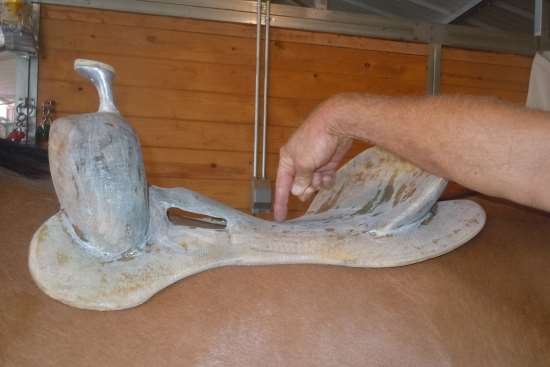
You also have to make sure that nothing hits the spine. Depending on how wide you have made it, the cantle gullet needs to be much higher than normal so it doesn’t hit, and the saddle maker has to be very careful in putting in his seat so it doesn’t hit, like this built in one did on an A shaped horse. And because you have also widened out the tree, making a comfortable seat for the rider is that much more difficult. Practically, making any amount of difference at the back can lead to big problems if everyone isn’t really thinking about how the rest of the tree and saddle is designed. And – it may not make a whole lot of difference anyway, depending on how wide the loin of the horse is...
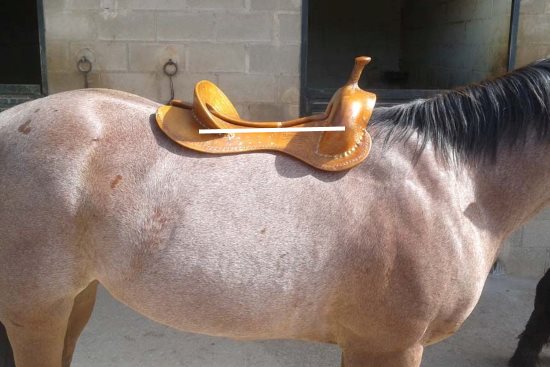
The next idea is to narrow up the front. Yup, that will work to lift the front of the saddle but what does it do to contact area on the horse? There is a reason you don’t want too narrow a tree. It puts all the pressure of the front of the saddle on a very small surface area at the bottom of the bars. And the front of the saddle carries more consistent pressure because that is where the cinch holds it down constantly. Having too narrow a tree will make the saddle more horizontal, but is apt to cause high pressure under the front of the bars on the horse. Not the best option either…
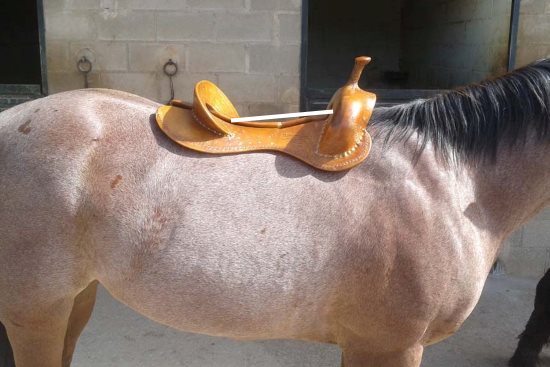
Well, if we have to leave the bars alone so they have good contact with the horse’s back in the place that is best suited to carry them, at least we can make things better for the rider by changing the top of the saddle. The way the ground seat is put in is key to how the rider sits in any saddle. (The white line in this picture represents the ground seat. Now imagine it with the nice curved shape that is comfortable for the rider, like a good saddle maker can put in, rather than a straight line. That is what I mean, but can't draw...) If the maker knows this is going to be used mainly on downhill horses, then they can change the shape so it puts the rider comfortably in an upright position. This at least will stop the rider’s weight from the saddle pushing more forward on the horse. But then, when the saddle is used on a more level horse, you can imagine what will happen…
So, where do we stand? We have always felt that it is best to fit the shape of the back the way it is. Yes, the saddle will run downhill, but it won’t compromise the fit by causing high pressures like narrowing it will or pressure on bone anywhere like having it too wide at the back could. Then the saddle maker can change the ground seat, or not, as they see fit. And this has worked well. At least we haven’t received negative feedback when we have done this, including for this horse. So far, so good.
But what is the final answer? We don’t really know. I don’t know that anybody knows, because no one has officially tested different designs to really find out. Individuals like us around the world think and try our best and generally get along well with how we deal with the problem. Ultimately, the answer is to stop breeding horses that are conformationally downhill. The problem is that so many of these types of horses do really well in competition, so that is not likely to happen soon…
(Unless, of course, people get informed about the problem and start looking at backs when they are looking to purchase a horse. If you buy a downhill horse, you are buying a saddle fit problem. Pass that one by and get one that has a back that is built to carry a saddle. Take a look at horse pictures from 100 years ago. They weren't perfect back then either, but you don't find many downhill horses in those photos.)
